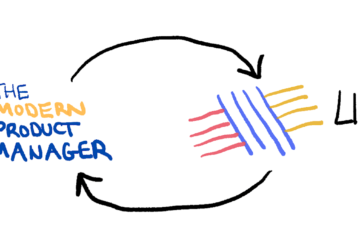Author: Gardner Fiveash
How many articles have you read recently that start with “due to COVID-19, the following has changed, etc. etc.” It’s become so commonplace to hear that refrain that it can be tempting to find something else, ANYTHING else to read about than how the pandemic has changed our lives.
But, disruption to our normal work-life routine comes with tremendous opportunities to change our habits and behaviors to become more productive and creative.
Many Product Managers I’ve talked to say that the best part of their job is that they work with many different teams and no day ever feels like the same. So in a pandemic when the days, weeks, and now months blur together, it’s easy to get burned out.
And if you’re feeling burned out, it’s never been easier to succumb to the many distractions that are right there waiting for you in your home. With the tech industry leading the charge towards more permanent work-from-home policies, this problem will not go away any time soon.
So what are some steps you can take to avoid burnout as a Product Manager?
Adjust Your Routine – Take Advantage of No Commute
This will obviously impact some people more than others, depending on the length of your pre-COVID commute. For the first two years of my career, I had about an hour-long commute from my apartment in Washington D.C. to my office in northern Virginia.
I tried to take advantage of that by listening to podcasts and reading, but the reality was I wasn’t spending the first couple hours of my day on high-value work.
I’m a huge proponent of deep work and believe that starting your mornings with deep work is essential to staying productive on the high priority tasks. If you wake up at 7 but don’t start deep work until 9, you’re not taking advantage of when you’re sharpest. And if you argue that you’re not a morning person… well the same logic applies to your evening commute too!
Whether it’s having more time in the mornings or evenings doesn’t matter as long as you put that time to work.
Knowing that I don’t have to travel to my office has drastically improved my morning productivity. I can wake up at the same time I used to, but now tackle my most important task for the day right away, before I’m likely to get pinged by co-workers. This tactic is a great way to reduce anxiety and maintain a positive mindset throughout the day.
Even though this tip is relevant to all positions, I would argue it disproportionately affects Product Managers. The best Product Managers are the ones who can get shit done, and maximizing time for deep work is how that happens.
Take a good look at how much of your time you’re spending on writing specs and doing true problem solving vs. doing surface-level work and reacting to the latest issue to pop up.
Use the Pomodoro Technique to Structure Your Day
Building on the last point, having more time is only useful if you’re disciplined about how you use that time. While the Pomodoro technique is something I started doing before COVID started, I’ve found it even more helpful in the last 6 months.
The basic idea is to take a task and work on it for 25 minutes at a time, with a 5-minute optional break afterward to help prevent burning out on the task. I use a simple online timer to keep me honest.
All distractions should be eliminated before starting a Pomodoro. This includes having your work email and team messaging software open. Put your phone far enough away so you can’t hear it buzz.
Product Managers work closely with many different positions and your time is in high demand from plenty of folks across the company. Especially with everyone working remotely, you’re more likely to get bombarded with messages and emails from teammates during the day.
You don’t need to respond to their emails and messages right away.
You should consciously decide when you pay attention to these distractions.
Even when you try to remove distractions from your work environment, realistically some tangential thought or reminder will capture your attention. The best antidote I’ve found to minimize the impact of these inevitable distractions is meditation. The impact of meditation on Product Management could be an entirely separate article that’s probably worth writing, but for now, I’ll just say that Sam Harris’s Waking Up app has some excellent guides and helps you recognize when you’re distracted.
Another benefit of the Pomodoro technique is it allows you to measure how long tasks take you, which will help plan going forward. The first thing I do each morning is look at my calendar and estimate how many Pomodoros I’ll be able to log that day.
I then assign Pomodoros to my top priorities of the day, to ensure I will spend time on the right tasks. Over time, I’ve gotten better at gauging how many Pomodoros a task will take, which helps me set realistic expectations with key stakeholders.
Finally, you can leverage your 5 minute break times on your hobbies (as long as you’re disciplined about it).
Chances are you don’t have a favorite musical instrument or sports equipment lying around your office. Working from home allows you to spend more time on hobbies and skills that you normally delegate to weekends or when you’re tired after getting home from the office.
These can be the perfect breaks between Pomodoros, to help reset your brain and enable you to work for longer periods of time.
Find New Ways to Collaborate
My favorite part of doing my job as a Product Manager in an office is collaborating with designers and developers. Being able to spontaneously grab a huddle room and walk through a product idea is a huge perk that we currently don’t have.
So you need to consciously find time to share your ideas with teammates to keep everyone in the loop and improve ideas with each other’s creativity.
There is a major benefit of holding informal product reviews remotely, which is you’re less likely to interrupt someone else’s deep work with your questions. Nothing ticks off a developer more than walking up behind her while her headphones are on and she is immersed in a coding problem. Scheduling a video call for informal idea reviews gives everyone the chance to be sufficiently prepared and focused.
Develop New Skills and Invest Time in Learning
In general, you’re way less likely to get burned out as a Product Manager if you feel like you’re getting better at your job and making progress towards career goals.
One of the best ways to do this is to acquire new skillsets. Product Management has significant overlap with many other disciplines, and improving your skills in those areas will help you better collaborate with co-workers and find new talents of your own.
Lately, I’ve been trying to improve my UI design and prototyping skills by creating mocks with Figma. So far, I’ve found this tool significantly easier to use than using browser tools to inspect the page element and build mocks that way. Another great resource is Coursera, which has countless courses on software development, web design, and even Product Management.
In addition to learning other skills, there’s never been a better time to learn more about Product Management from countless industry experts. The fact that you’re reading this article means you’re likely familiar with Alex Mitchell’s Modern Product Manager Newsletter, and he mentions a bunch of other great newsletters in this article. My personal favorite of the ones mentioned here is the PMHQ newsletter.
If you’re looking to commit more time to this topic I highly recommend the book Inspired by Marty Cagan. I come back to this book often and view it as required reading for any Product Manager.
Are you already using any of the above tips to help avoid burnout as a Product Manager? Which key topics did I miss?



0 Comments